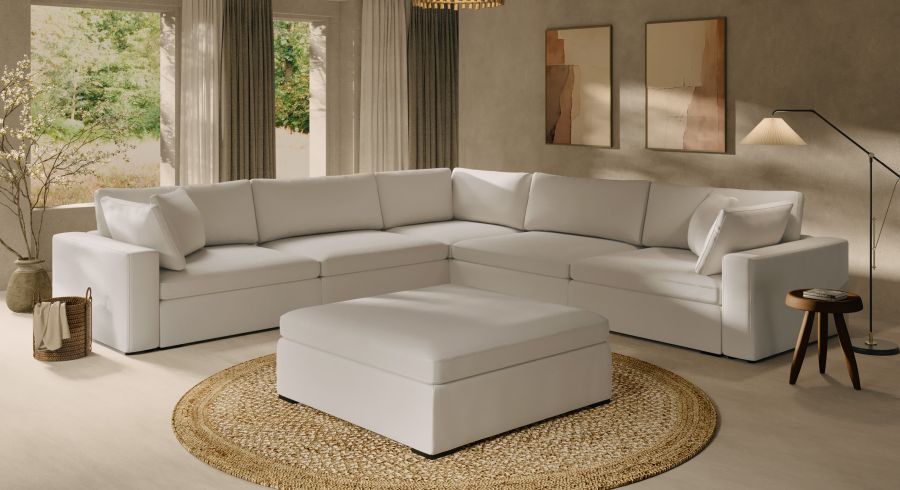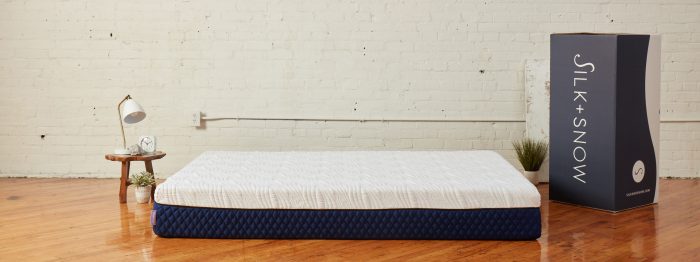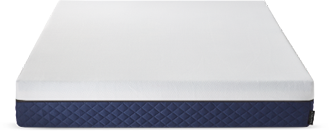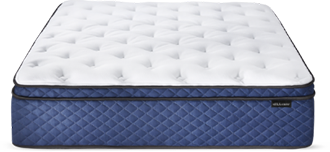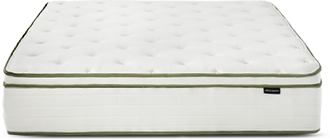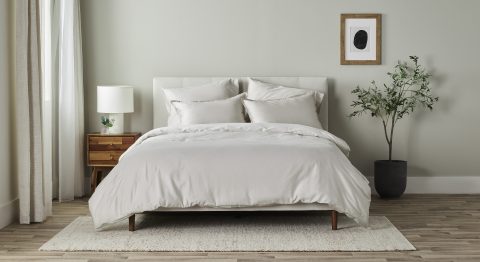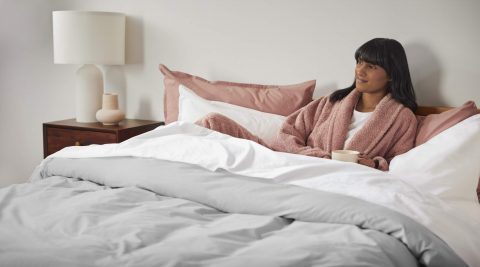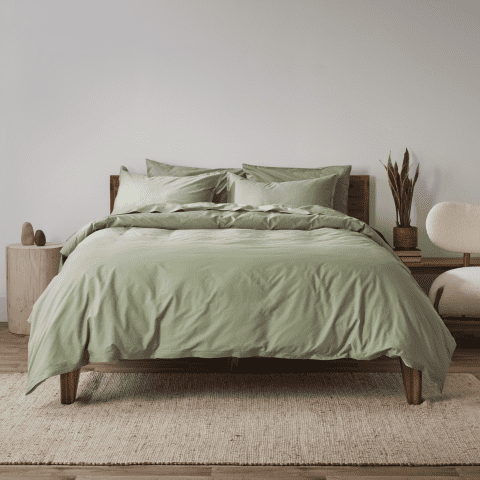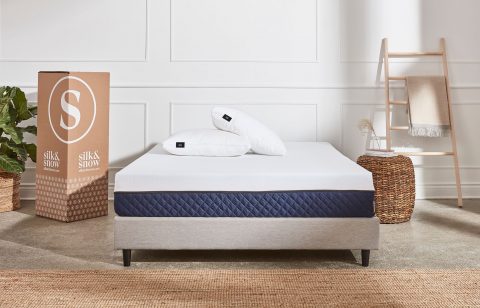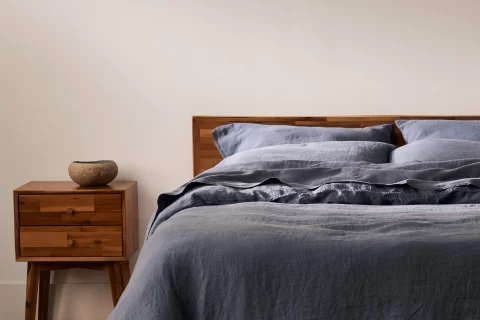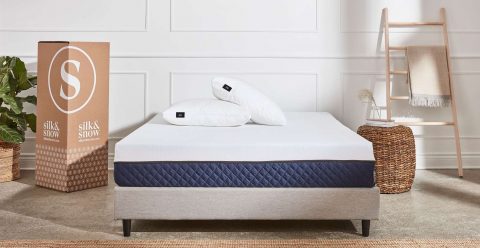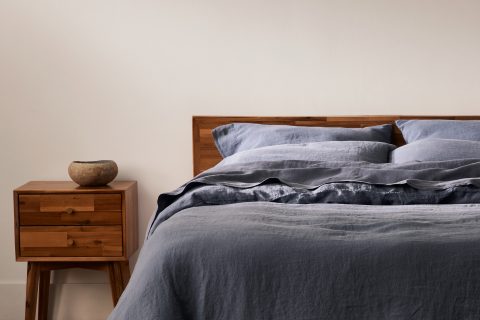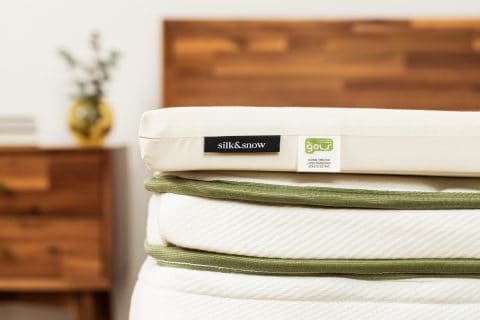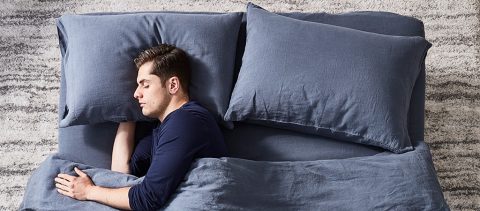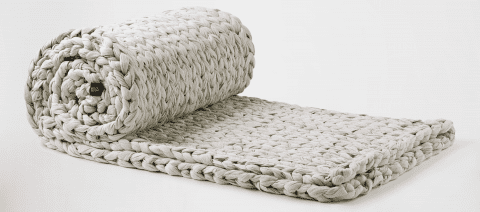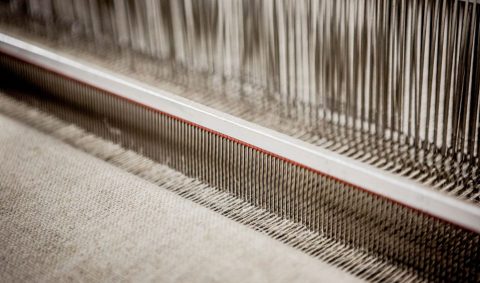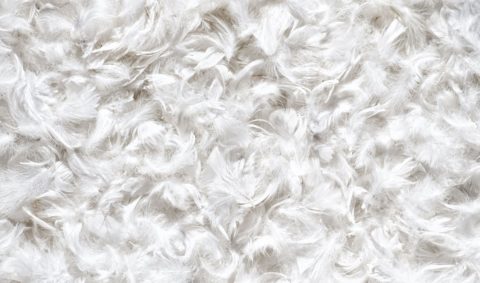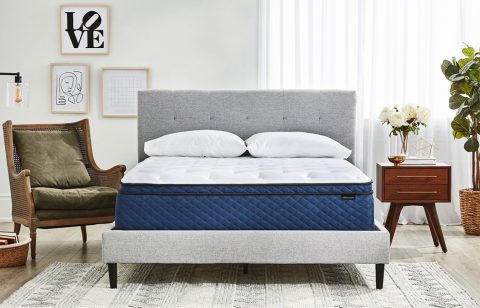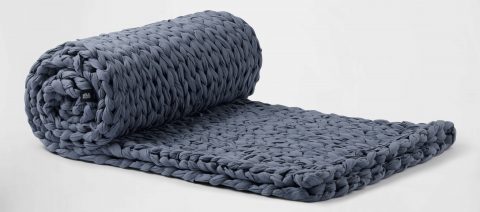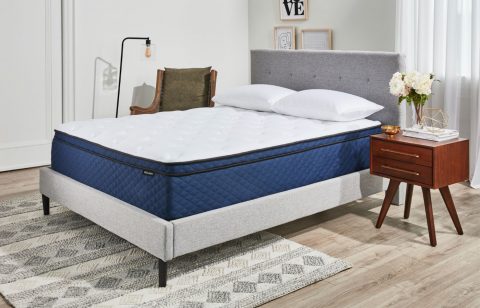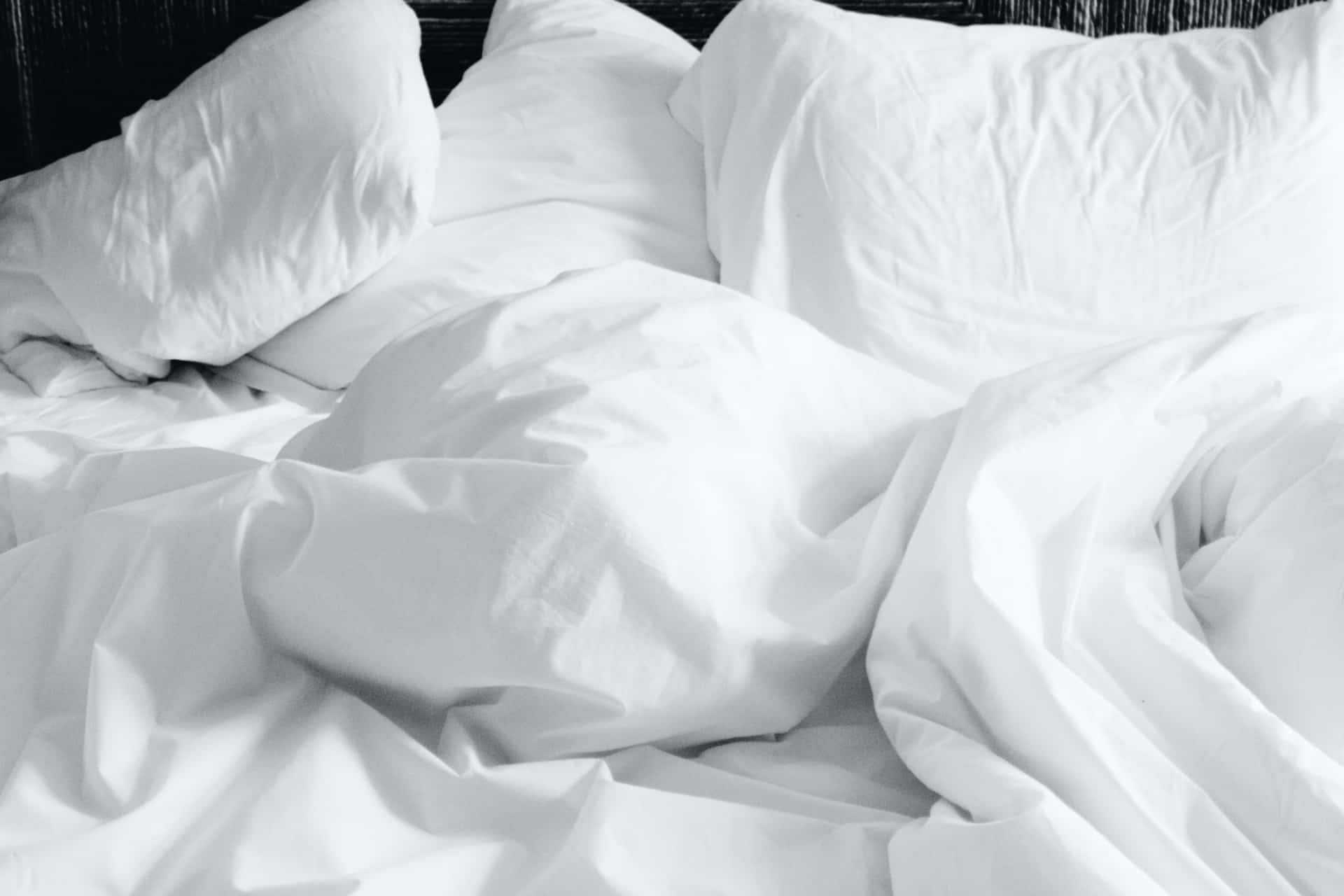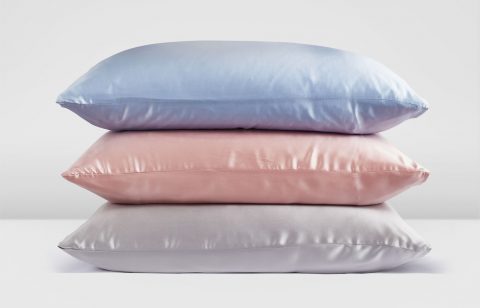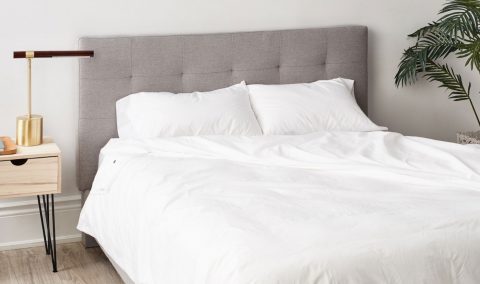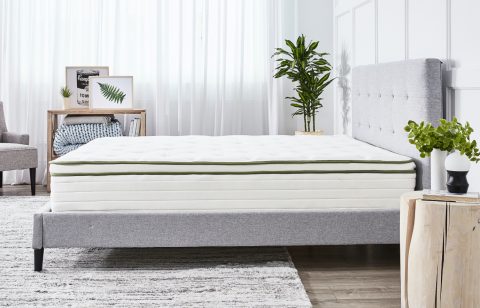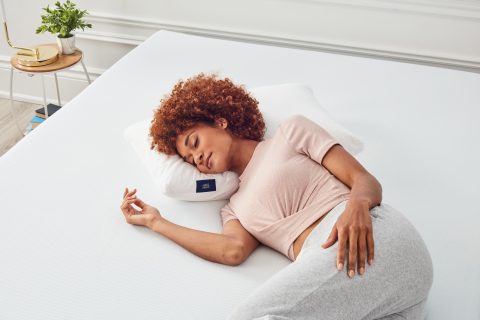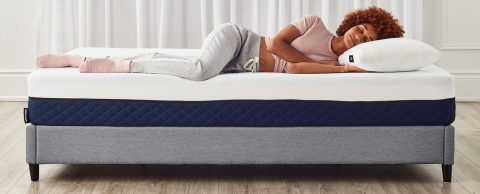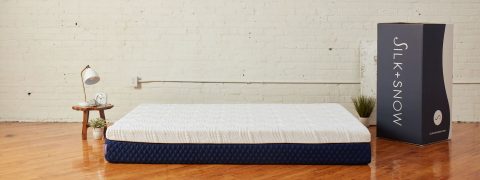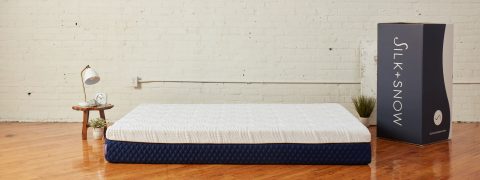When it comes to preparing for sleep in the dregs of the winter months, the natural defensive response is often to pile on the blankets and bundle up. It initially seems like a great idea, that is until you wake up at 3:00 AM pouring sweat and can’t get back to sleep. The reason for this rude awakening is simple: our bodies crave cooler temperatures for optimal rest.
A Cooler Sleep is a Better Sleep
Before we sleep, our bodies undergo a natural cooling process which helps promote melatonin production. Anything we can control in our sleep environment to facilitate this process is strongly encouraged. This could mean lowering the thermostat (ideally between 15 and 19° C) and choosing a mattress that sleeps cooler, which will help to regulate body temperature.
Mattresses that are made with gel memory foam are commonly touted for providing a cooler sleep than those that aren’t. But what’s the difference between gel memory foam and regular memory foam? And how, if at all, does it sleep cooler? Read on to learn about the characteristics of gel memory foam and to learn about its temperature-regulating properties.
What is Gel Memory Foam?
Gel memory foam is a type of memory foam in which the foam layers are infused with gel. The nature of this gel can change depending on the mattress¹:
- Thermally-Conductive Gel: This gel is very cool to the touch. It draws heat away from the body through a process of thermal conduction and releases it away from the sleeper into the surrounding atmosphere.
- Phase-Changing Gel: This type of gel transitions from a solid to a liquid as it absorbs body heat and then from a liquid to a solid as it releases body heat. This initiates a repetitive process which works to cool the mattress from the inside while helping to regulate body temperature.
While there are differences between these two types of gels, their primary job is essentially the same: to wick body heat away from the sleeper and release into the surrounding atmosphere. In order to further optimize this process of heat dissipation, certain thermo-conductive gel foam designs, such as the Silk & Snow mattress, combine gel memory foam with an open-cell structure. This open-cell construction is crucial to gel foam’s effectiveness. It improves the mattresses breathability and prevents body heat from getting trapped in the high-density foam. More on that later.
LEARN MORE ABOUT THE SILK & SNOW MATTRESS >>
Gel Memory Foam vs. Traditional Memory Foam Designs
The use of temperature-regulating gel is a modern solution to a problem that existed in older foam mattresses: they provided effective support, yet they were very poor at regulating heat. These traditional memory foam mattresses were designed with ultra high-density foam, which provides excellent support. That said, these ultra-dense mattresses had a closed off structure that made it very easy for body heat to stay trapped in the mattresses thick composition. Because of this, many older memory foam mattresses have a reputation for sleeping very hot.
Newer generations of memory foam mattresses solve this problem by utilizing gel foam and open-cell designs. By incorporating this technology, a foam mattress can provide all the support of traditional designs, while still effectively regulating body heat. It allows for mattresses with higher densities that can absorb and release heat away from the body.
The Importance of an Open-Cell Design
One of the common detractors of gel foam is that its cooling properties don’t last indefinitely. While the material is effective at regulating body temperature, it will lose this property overnight. For instance, phase-changing gel will change states to pull heat away from the body and release it into the surrounding atmosphere. While this makes for ideal sleeping conditions at first, the temperatures will eventually equalize and the gel foam will not have the same effect as the night wears on. While this may be true for certain gel foam designs, there are design factors that will drastically improve gel memory foam performance. The most important of these factors is whether or not the mattress has an open-cell structure.
What is an Open-Cell Structure?
Along with gel memory foam, open-cell construction has become a popular solution to the aforementioned problem of high-density foam sleeping hot. An open-cell structure means that the mattress is constructed with tiny, interconnected cell openings through which air can evenly circulate across the entire surface. This evenly-distributed ventilation is key in preventing body heat and odours from staying trapped in the foam. These open cells also improve the performance of the gel, as they allow for easier heat conduction and dispersion across the mattress. In this way, open cells are instrumental in gel foam performing as it should. A memory foam mattress that utilizes the dual benefits of heat-wicking gel and an open-cell structure will sleep cooler, for longer.
What is a Closed-Cell Structure?
When you contrast the open-cell foam design with closed-cell foam, the differences are immediately evident. With closed-cell foam, the mattresses cells do not meld together to create a porous web. Instead, the cells are closed off from one another and packed together very closely. The resulting memory foam is ultra dense and very resistant to pressure. This is makes it great for certain applications, such as insulation, but it’s certainly not ideal for mattresses. While they do allow for much higher mattress foam densities, closed-cell designs effectively negate airflow and ventilation. As a result, they will sleep much hotter than mattresses with open-cell gel foam structures.
The Percentage of Gel in the Memory Foam
Another major factor in the effectiveness of gel foam designs is the concentration of heat-wicking gel contained in the memory foam. If there is an insignificant amount of gel infused into the mattress, it will have a reduced chance of helping you sleep cooler on a regular basis. Certain gel memory foam designs actually only contain 5-10% gel, which will lead to the more temporary cooling effect mentioned earlier.² On the other hand, high-performing models typically contain 25-30% gel, which can lead to several hours of sustained cooling. Of course, the duration of performance also depends on the ambient temperature in the room and the sleeper’s overall body temperature.
Considering a Change?
The Silk & Snow Memory Foam Mattress is made with three layers of high-quality foam that provide a combination of durability, support and luxurious comfort. The high-density comfort layer utilizes and open-cell structure and thermo-conductive gel foam to create the perfect conditions for a cooler sleep.
A 1.8 lb support layer forms a stable foundation, followed by a 1.8 lb layer of transitional performance form which limits motion transfer. These two layers support a high-density 4 lb layer of open-cell gel memory foam which provides the support needed to relieve pressure points while you sleep. For added convenience, the mattress cover is fully removable and washing machine ready.
The Silk & Snow Hybrid Mattress contains individually-wrapped pocket coils made of double tempered steel which work independently of each other for better support and reduced motion transfer. They also contain three layers of foam: a layer of high-density support foam, a layer of 4 lb gel memory foam and a top layer of cooling gel foam. Both the pocket coils and the foam layers are meticulously sourced from Canadian manufacturers to ensure optimal comfort and quality.



